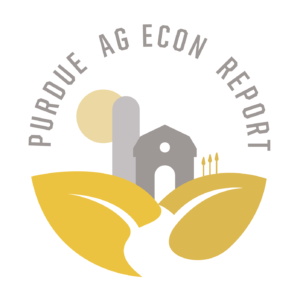Food Prices Keep Moving Higher
October 23, 2011
PAER-2011-12
Corinne Alexander
After two years of very low food price inflation, shoppers are seeing substantial food price increases in 2011. Food price inflation has been accelerating this year as food manufacturers, retailers, and restaurants are forced to pass on record high ingredient prices. The four primary drivers of food price inflation are:
- strong global demand for commodities largely driven by a growing middle class in developing countries such as China
- major agricultural production problems due to extreme weather events such as the drought in Russia in 2010, flooding the U.S. Midwest, the wet spring that delayed planting, the record U.S. heat wave, drought in the Southern Plains that is affecting both crops and livestock, the early onset of the dry season in Brazil, and Hurricane Irene
- high crude oil prices
- government mandates that use food raw materials for corn ethanol and soy biodiesel production.
As of August 2011, overall food prices were 4.6% higher than August 2010. For all of 2011, food prices are expected to rise by about 3.6%. Food inflation is composed of expenditures at the grocery store and restaurants. Food price inflation at grocery stores was 6.0% higher in August 2011than in August 2010. Grocery store prices are much more sensitive to commodity prices. For restaurants, the largest cost is labor, followed by food costs. With little upward pressure on wages, restaurants have not had to increase their prices as much with restaurant inflation at 2.7%.
Over the last 12 months, the product categories with the largest food price increases have been coffee, dairy, meat, fats and oils. The household staple with the largest price increase is coffee at 46%. Beef prices have also been higher, led by ground beef at 13%. For the dairy sector, whole milk and butter prices are up 12%. In general, the prices of wheat products have increased over the last year, with pasta up 14%, and this trend will likely continue with the flooding faced by farmers in the Northern Plains and the drought faced by farmers in the Southern Plains.
At present, there are very low U.S. and global inventories of food commodities such as food grains, feed grains, sugar, fats and oils. Given the adverse U.S. weather conditions in 2011, which are reducing supplies, U.S. inventories of these commodities will remain low until at least mid-to-late 2012. In order for basic commodity prices to fall, there needs to be large harvests with supply exceeding demand so that inventories can be rebuilt to more comfortable levels. High commodity prices are likely to persist, and retail food prices will continue to be high through 2012. USDA is projecting food inflation of 2.5% to 3.5% for 2012.
The food industry is in a classic costs-price squeeze as consumers make adjustments to a more moderate lifestyle. The food industry will make adjustments as they also learn to manage the financial risks in volatile ingredient prices.
